Health Matters is a weekly radio show by the Medicine Center Pharmacy on WHBC 1480 AM in Canton, Ohio. This episode pharmacists Brad White and Paul White discuss Health Insurance mysteries and how to save money on healthcare expenses with Rick Pipes of Pipes Insurance in New Philadelphia, Ohio.
You can find all our Health Matters Podcasts here: iTunes Google Play Stitcher
A recent study showed that only 4% of Americans understand the key terms that are necessary to understand their health insurance. The four key terms identified to understand your health insurance policy are:
The deductible
The copayment
Coinsurance
Maximum out of pocket
Understanding these terms unlocks the mysteries of your health insurance and they are the key to reducing your out of pocket expenses and saving money. This morning, we're going to talk with Rick about saving, money reducing out of pocket medical expenses, and using our health insurance wisely. We'd like to remind our listeners that you can subscribe to you podcast on your smartphone. Just look for health matters with the Medicine Center pharmacy in the app store and you can take any of our programs with you anytime. If you have any questions like addressed today, you can post them up on our live Facebook feed. [00:43]
What is copayment?
On a traditional Preferred Provider Organization plan, which is a PPO, all those components exist. Most the time the people don't see their deductible, we'll talk about that in a second. They have what are called copays. Copays are literally just a flat small dollar amount that they pay for certain types of procedures; for example, you go to your general practitioner, you just pay on average $25 to $60, depending upon the type of provider that it is. They don't see their deductible, it helps with their cash flow. So they're not having that larger expense, as well with prescriptions as you well know, there's tiers of copays that exists, whether it be generic type drugs, name brand type drugs, non formulary, these range anywhere from $10 up to $300, depending upon the type of prescription. There's copays for urgent care visits, those are the non-emergency room, private facilities typically that range at about a $50 to $75 copay. And then, of course, emergency rooms if you have to go typically do have a copay as well. They're getting higher and higher because the cost of the emergency room averaging about $150 to $300 as a copay. [02:25]
What is a deductible?
Now, so when do we see our deductible? What is a deductible? Your deductible is basically for the larger expenses. Typically, we're talking outpatient services, inpatient services, diagnostic testing, perhaps even durable medical equipment. At that time you have an amount of money that you spend before the insurance starts to pay from January to January that doesn't include those copays. The range is that your deductible, ranges from $500 all the way up to larger deductibles of $5,000. And that's how much you spend before the insurance pays. [03:37]
What is coinsurance & MOOP?
After your deductible, at that point you share with the insurance company the cost, i.e., the coinsurance you're speaking of. You've probably heard of “80-20”. 80-20 means that I will pay 20% of the bills after my deductible, the insurance company will pay 80% of the bills after my deductible. This will continue on and on until you hit your annual maximum out of pocket. In our business we call it “the moop”. Sometimes employees like that term better than moop. But when you hit that the plan will pay 100% of the cost. So, if you're paying your 20% after deductible, that will go to a certain point. The highest that the government allow us to have, if you're using network doctors and hospitals, is $8,150 for one person, and double that for family, as a deductible as a maximum out of pocket, deductibles would be lower than that. [04:10]
What is Consumer Driven Health Care?
Well, it started in 2004. Basically, what happened is the republicans at that time under President George Bush thought that their answer to health care would be, “You know what? Let's make people better consumers.” If you have a $25 copay, as we mentioned, or a prescription copay of $10, you don't know that that cost of service or that cost for prescription may be $80, or maybe $150, or frankly, could be $400. We don't know. So, what they did is they created some vehicles and tools in the health care that allow the consumer to see those costs with a higher deductible and then have those copays so that they can make better decisions as consumers; thus, consumer driven health care. When you shop for a vehicle, when you shop for anything, you compare, you don't go out and buy. The expensive Porsche we just spoke about, you do some comparative shopping and that was the purpose behind consumer driven health care. [06:52]
HDP vs HSA vs HRA
I just mentioned in 2004 that is when consumer driven health care, that is when HSA’s came out and what they are, is: first of all, you have to have a High Deductible health Plan (HDP) that qualifies by the IRS to have a Health Savings Account. The deductible, the richest HSA or Health Savings Account plan you can have with the High Deductible health Plan starts at $1,400 for single and $2,800 for family, that would be the absolute richest, most of them are much higher. At that point in time on these plans, other than preventative care, because that's always covered 100%, you are not allowed to have those first dollar benefits as copays. So, everything's under your deductible. But what you do get is you get to open up this account at a bank that is specifically for Health Savings Account money, that is guided and monitored by the IRS. Now, the employer or the employee, or both can now put money into this account, completely tax free. They use this money then to pay their higher deductible, as well as the IRS let’s them to use this money for other items such as dental and vision, long term care premium, LASIK eye surgery, orthodontia, I got $9,000 in my boy’s teeth. So, all these things qualify from your account but what really makes them unique is: I tell people, this is kind of your healthcare retirement, because this money; you can put $3,550 in a single or $7,100 a family, more than your deductible at times, and then it carries year after year and the interest is tax free as well. So, hopefully I'm accumulating money so that when I retire, I can use this money towards other health care expenses at age 65 I could take it out and pay taxes but most of the time we'll just spend it down. Now, in contrast to that, so, I mentioned the High Deductible health Plan and the HSA. [08:14]
Health Reimbursement Account (HRA)
The difference between that is: that is employer money, that when you show those same types of expenses that qualify by the IRS, the employer can reimburse you for them. But if you don't use those expenses, the employer retains the money. So, it's only spent if you have those expenses where the Health Savings Account, once it's in their account, they personally own it just like they own their 401k, and you can't take it away from them. [10:09]
Having HSA and HRA both at the same time
Well, actually, you could have them both, but you have to start with the HSA and the minimum levels of deductibles, then you could have an HRA on the backside of that. [10:44]
Why care about cost when I have insurance?
One of the things I hear all the time is these insurance companies are making all kinds of money. The reality is under the Affordable Health Care Act, they limited how much an insurance company can retain. Anywhere from 15 to 20% after claims paid, they actually have to return it, if they collect too much. So, it is not necessarily the insurance companies and I know I will get looked at unfavorably for that because people want to blame them. But the costs keep rising, and so when the costs rise, what happens to you as an employer who's offering health insurance is: a great portion of your increases relative to your claims specifically as to your group's health conditions. Average renewals are anywhere between 10% and 20%. Most employers can't afford that type of increase, especially when they can't increase their goods and services by the same amount. Therefore, they have two options:
They either increase what the employees are paying from their paycheck to accommodate the premium increase, or
They adjust their plans so that there's higher deductibles, higher maximum out of pockets and hit the employees who are using the plan.
For these reasons, I feel that the employees need to be as engaged as the employer and it is a team approach. It's not one of the others, not the employees against the employer. I've worked very hard at trying to get within the employee population and educate them with certain seminars and tools that will probably talk about today. So, that they help make good decisions, realizing they are part of how that renewals going to look and what their contributions are going to be next year. [14:42]
How can I save money on medical costs?
Well, you need to question things, you know, it's not natural for us to ask our doctor a lot of questions. They're in a hurry, sometimes they obviously are working on their flow of patients, but we have to stop and start asking questions, including of our physician. So, find a doctor that is willing to talk to you. If they're ordering a slew of tests, ask about those tests as to the cost of those tests. For example, I heard a statistic a long time ago that a PET scan is within 5% of what maybe an MRI could show you versus maybe 85% of what an X-ray could show you, and they're not all created equally, but sometimes the X-ray may present the right solution before the MRI or before the pet and the cost difference is anywhere from $185 up to $3,000 up to $6,000. So, again, education, not questioning our doctor per se, but working with them on solutions and uncovering all of the answers that you need to listen to. [17:56]
What are the tools that can help save medical costs?
Well, right now insurance companies have been becoming pretty creative to help their constituents save on costs. So, for example, there's not a carrier out there right now that if you go to their online site, doesn't matter if it's Blue Cross Blue Shield, Medical Mutual, AultCare, any of the carriers, they have a cost comparison system. So, if I'm getting a knee surgery done, I can say, “Listen, I'm getting the knee surgery, here's my doctor,” but they can work out of several hospitals. I put those hospitals in. I put the procedure in, and they'll literally tell me what the cost of that is, at each one. Now, more importantly, they also have quality ratings. I don't necessarily want to go have a colonoscopy, but I want to go to somebody that actually has a good success rate and a good cost. So, that gives me that information as well. In addition, one of the newest things too, that insurance companies are providing is “telemedicine”. This is not in lieu of your general practitioner. I don't wish to offend any of my doctor friends, but it is in addition, it's something that they can access quickly. I mean, literally within 10 to 20 minutes a licensed physician will typically call them. They're trained in telemedicine, and if we're talking rashes, light colds, allergies, things that are minor, they can treat you telephonically over Skype, over FaceTime, and then through that they could call a prescription into the Medicine Center Pharmacy, you can fill that within a relatively quick period of time, and that person's up and running and never left their home in a short period of time. The cost of that literally is $45 to $49 if you were to build the entire cost. So, it's very affordable and they'll communicate to your general practitioner, so they have that information on your health history. [19:59]
Again, I don't want to replace the general practitioner, but at times we can't get to see them in a timely manner. So, telemedicine can help with that and it depends on the severity, but for sure on sinus infections, light colds, allergies, rashes, those things that you probably know the answer to in advance but maybe also need a prescription the remedy. [21:52]
Cost difference between Teladoc, Statcare, and emergency rooms
Definitely pricing is the first issue but, obviously, severity of the medical needs at hand, dictates where we go as well. So, we talk about Teladoc a little bit; for sure, the quickest; for sure, the most economical $45 to $49 as mentioned, but they can't do everything. They're not going to be able to take an X-ray, do stitches, take your blood pressure. [26:31]
There's packages now tied to Teladoc, within school systems they has a nurse practitioner with a station to telephonically electronically sending the information to the doc for diagnostics. So, it does exist. [27:07]
So, let's say my son's played soccer, both of them had injuries in soccer; you don't know if it’s a break, if it's a sprain, if it's that type of thing. Well, you can't do an X-ray over Teladoc. So, that is a perfect example of when an urgent care would come in handy. That's not the emergency room. It's usually a privately owned urgent care. At that time you go there's a physician on hand if the hours are appropriate, and they can do an X-ray. Cost of this is on average between $300 to $600 depending on how much the imaging is on the total visit. And again, closer to the $300, depending upon if they are doing imaging or not. But you get in, it's not as crowded. You get there quickly. It's a lower costs than going to the emergency room. [27:30]
When do I go to an emergency room?
Oddly enough, emergencies are coded from 1-2-3-4. 1 and 2, you never need to go to emergency rooms, so those are the people that probably shouldn't be there. 3 and 4, you should. So, based on symptoms, which could be life threatening, and that's diagnostic symptoms, that's not actually what's happening, chest pains, those types of things, then you should go to the emergency room, that's what they're for and they do it well. Just realize, if it's non-emergent, you will be in that waiting room for a long time with a lot of other sick people. On average, if you're there for 4 hours, which is not that long emergency room, the costs going to be about $1,200. So, again, I wouldn't know why people would want to be there if it's not emergent, and now there's a lot of options that they can go to besides the emergency room. [28:15]
How can I save money at the pharmacy?
I truly tell every associate and I do group meetings and have done group meetings for thousands of employees to form a relationship with their local pharmacy and specifically, I do say the Medicine Center. I encourage them to first thing go to you or somebody like you, make sure that they are giving that prescription regimen to that pharmacist and doing a few things. I've seen way overprescribing from different physicians, there's no continuity. You guys can say that this works with this. This doesn't work with this. You talk to their doctor on their behalf, make sure that they're not getting overprescribed and things are working together. Just as important the cost of those drugs as we mentioned, they may be on the newest name brand drug, they cost 10 times as much as the laboratory that's been out forever and has a low cost. You can help them with those decisions. And as important over the counter medication, they now are coming in either or which over the counter prescriptions may save their money, easier access to, on your shelves, already flu shots, which you can do in house, all these things lined itself and you work with their doctor. So, often I tell people, you want to keep the relationship with your doctor, but sometimes you need to let your pharmacist work with your doctor on your behalf to help you to keep you healthy and to help you save on costs. [32:23]
Preferred Pharmacy
I obviously have a passion for health care what I do, and part of why I have such a passion is I always want to pull back the curtain and see what the wizard’s got going on back there. And one of the biggest mysteries and non-disclosed is what we call the PBM’s, the Pharmacy Benefit Managers that are basically the conduit between the pharmacy companies and the insurance companies and yourself. So, what they do, the big boys, is that pricing on that drug may not necessarily be at a lower cost to that insurance company that they're calling a specialty, but on the back end, that overpricing of that prescription, they give out and hand out what's called “rebates”. That rebate may go to or for sure goes to the PBM, the Pharmacy Benefit Manager. Sometimes goes back to large employers, and most of time is shared with the insurance company that's telling you to go to that specialty prescription program. So, if that drug internally is more expensive, even though they're paying a lower copay, they may hit that doughnut hole that they would not hit normally in a quicker fashion, and then they have this large cost to them on a drug that they thought they're saving money. [37:09]
What Medicare plan should I pick?
Every Medicare Part-D plan has its own list of prescriptions that may or may not accommodate the patients you're working for. So, I guess my advice would be, first of all, that person work with you in conjunction with a consultant that's independent. We do have two in our office, and I say independent not working directly for the advantage plan, but they have two choices:
They can get a Medicare Advantage plan, or
Medicare supplement plan.
They have six months from the time they turn 65 to do that, without any issues, after that they have that open enrollment period that they have to go to, in order to get on board. There's a slew of options, and unfortunately, that population sometimes just get overwhelmed and does not want to make a decision that may be best. So, I say, seek trusted advisors yourself, along with somebody that understands the plan side, understands their health needs. So, they're not just looking at price, but they're looking at coverage, because coverages are not all built equally. Advantage plans are managed care, and they do have gaps and holes that may not accommodate that patient. So, you want somebody that understands that language to work in conjunction on their situation. [43:32]
The medicare supplement, when you're talking A through F, they're identical, just different carriers. But when you talk about advantage plans, managed care, they go from no premium, because they're paying part of your part B but those are really scaled back coverages, to a lot higher premium for better coverages, and those are the ones with the open enrollment on an annual basis. [45:07]
How Pipes can help?
We've been there since 1974. There's over 20 Associates working for Pipes insurance service and map investments. We do all types of insurance investment products. Of course, I do focus on the employee benefits, but that's one division. We also do commercial property and casualty insurance. We also do individual property and casualty, your home, your auto. We've talked about senior products, we have specialists in that. Individual health insurance, and again, we have another company called map investments that can help with investments, as well as life, annuity, disability, those types of things. [46:03]
We're located on West High Avenue in New Philadelphia. Our phone number is 1-888-328-8958. Our website is simple, it's pipesins.com, and if you want to email me with questions or if you have any thoughts that you'd like to talk about, it's rick@pipesins.com. [46:47]
Summary
Since most people are insured through their employer, don't look at your employer as the enemy. Where I’ve seen success, and I've literally seen a lowering in claims year to year, is on those cultures that take time to happen. Where the employees are working with the employer. They're creating plan designs that cater to good consumerism, consumer driven health care. They're giving them tools to stay healthy. In some cases, they're even getting the medical care, but they're working together. There's benchmarks in place. They all realize they're in this problem that health care inflation is a national problem, it is not the employer problem, and what can they do as a subculture to control those costs and work together. [47:28]
This episode is sponsored by Mercy Medical Center and Studio Arts and Glass.
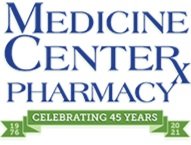
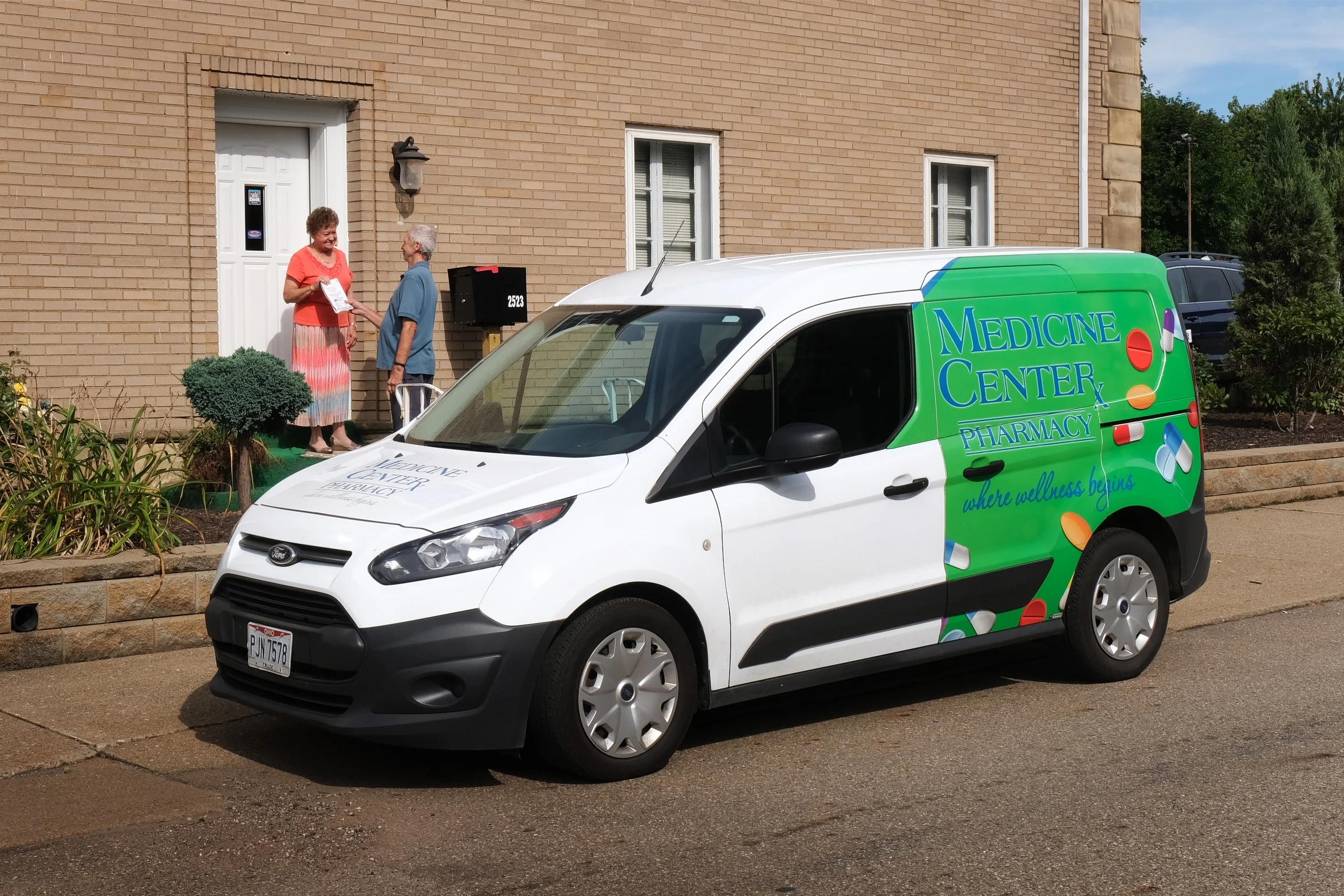

























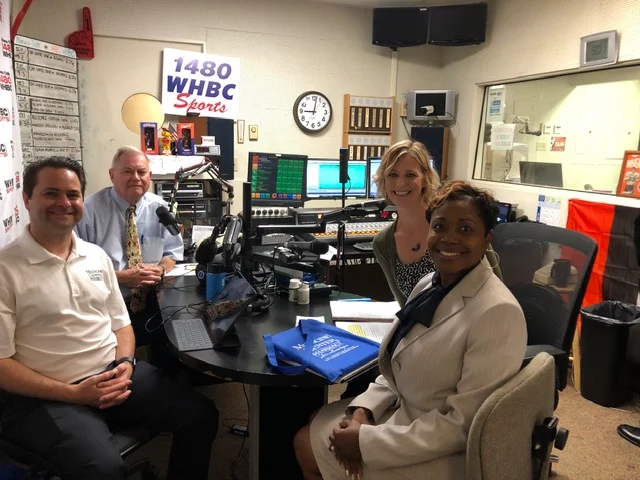
















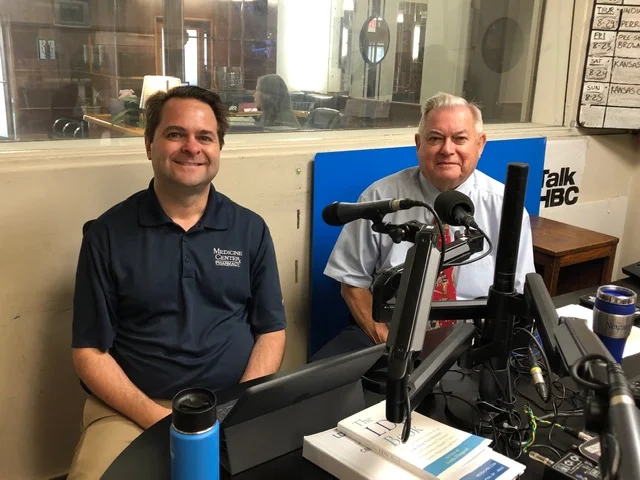
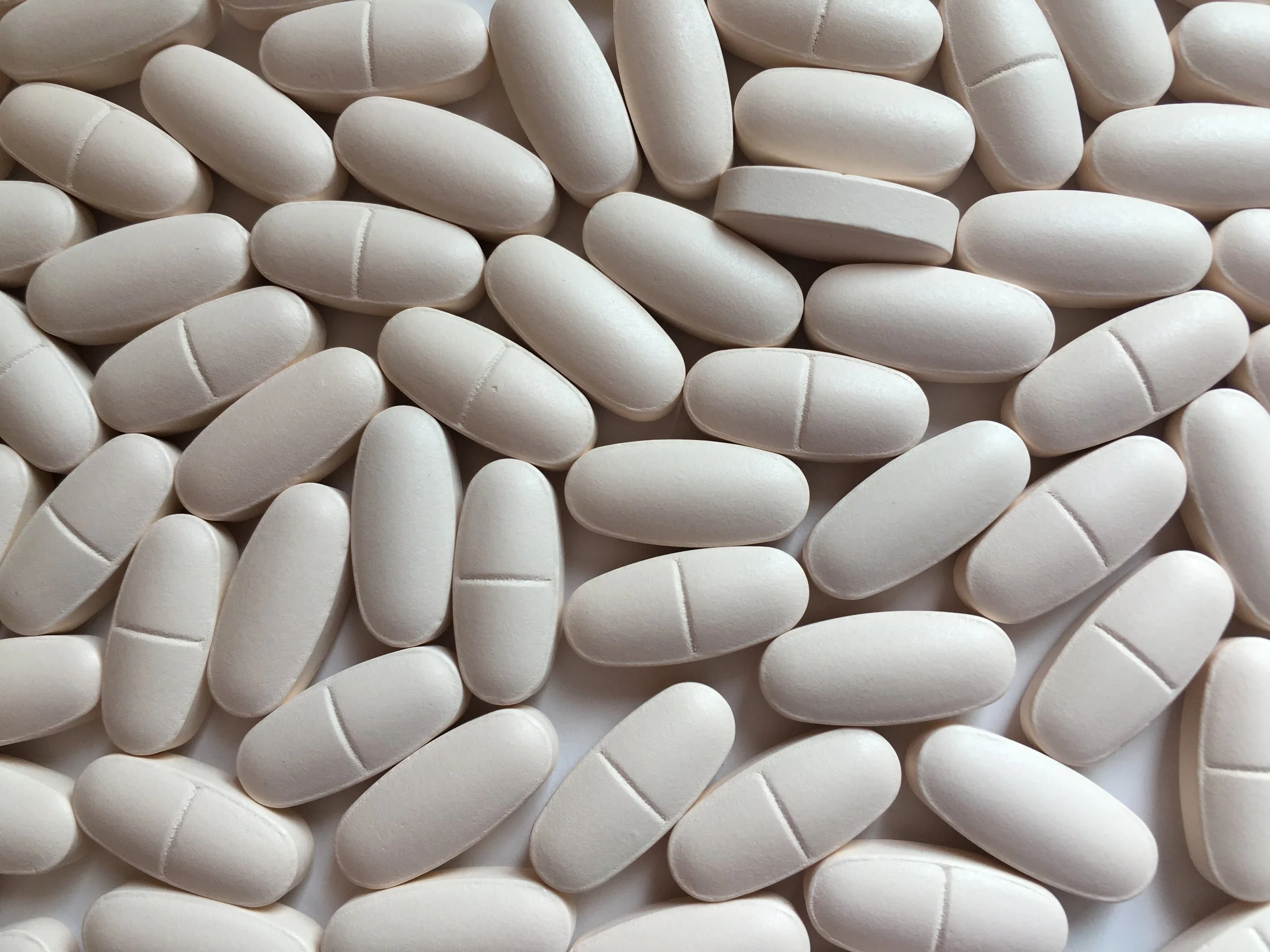























Health Matters is a weekly radio show sponsored by the Medicine Center Pharmacy on WHBC 1480 AM in Canton, Ohio. This episode pharmacists Brad White and Paul White discuss Women’s Health.